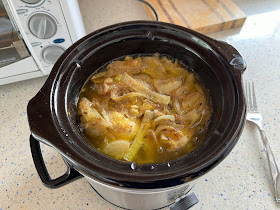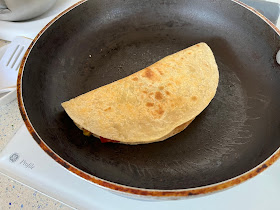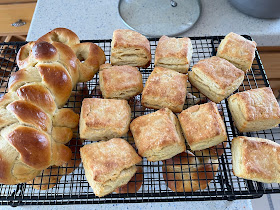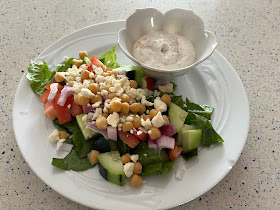Once again, I found myself on a kosher website simply because the recipe sounded good. I shouldn't be all that surprised. After all, Israel and many diaspora countries are on the Mediterranean, and that's still how I'm trying to eat. What Jew Wanna Eat seems like a nice recipe site. I probably won't go looking there all the time, but this one was what I had in mind.
Unfortunately, this recipe had a few problems when I actually went to make it. The instructions weren't detailed enough for my liking, there wasn't any paprika in it, and the whole mixture was too soft. Black beans are way softer than chickpeas and the first round ended up with the texture of ground beef rather than patties. I put in a lot more flour and got it to hold its shape a little better, so that's what we're going with today.
2 C cooked black beans
*1 C diced onion
1 C parsley, chopped
* 3 cloves garlic, chopped
2 Tb lemon juice
1 tsp cumin
1 tsp paprika
1 tsp kosher salt
1/4 tsp black pepper
1/4 C flour
Grapeseed or other neutral oil for frying
1. Rinse black beans and get them as dry as you can. If using canned beans with regular sodium, cut amount of added salt to 1/2 tsp.
2. Everybody except the oil and flour into the food processor. Run into a thick and chunky mixture. Sprinkle in flour and run again to distribute. Chill 15 minutes while you prepare the pan.3. Heat a large skillet over medium-high and pour in enough oil to generously coat the bottom. One of the mistakes I made with the first round was putting in too much. You want the oil to get to around 375º, so it drops to 350º when you add the falafel.4. Scoop bean mixture into the pan. I used the 1 oz cookie scoop, but a spoon works just as well. Fry until the bottom is crispy, about 3-5 minutes, then carefully flip and cook another 3-5. Remove to a paper-towel lined plate, add more oil to the pan, and repeat as necessary until all the batter is fried. Serve hot, either on its own, in a pita, or as part of a salad.Difficulty rating :)


















































